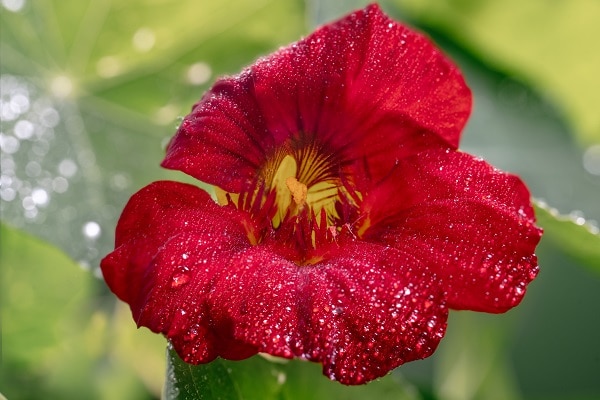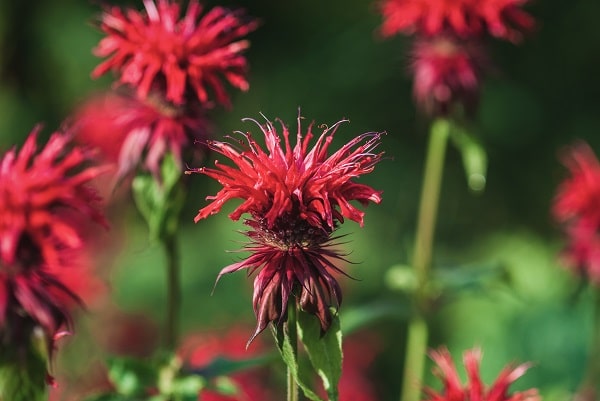Pollinators are important for our environment and play a crucial role in the life cycle of many plants. Creating a pollinator garden can help support these important creatures and help keep the ecosystem healthy. If you’re looking to create a pollinator garden, you’ll want to include some of the best plants for the job! From flowers to trees, many different types of plants can serve as good homes for pollinators. This article will look at some of the best plants for a pollinator garden. Pollinators play an important role in the ecosystem by helping transfer pollen from one plant to another, allowing for the fertilization of plants and the creation of fruits and vegetables. A pollinator garden is a type of garden that is designed to attract and support pollinators, such as bees, butterflies, and hummingbirds. A pollinator garden typically contains various flowers that bloom at different times throughout the growing season. This ensures that there is always a food source available for pollinators. Furthermore, a pollinator garden typically has a water source, such as a birdbath or pond, which provides essential hydration for these creatures. By creating a pollinator-friendly habitat, you can help support these important creatures and positively impact the environment.
Contents
The Best Plants For A Pollinator Garden
Many different types of plants can be used in a pollinator garden. Some of the best plants for a pollinator garden include:
Nasturtium

Nasturtiums are annual flowering plants popular for their bright, showy flowers. But nasturtiums are more than just pretty plants – they’re also great additions to pollinator gardens. Nasturtiums attract bees, butterflies, and other pollinators with their sweet nectar. And since they’re easy to grow and don’t require much care, they’re perfect for gardeners of all experience levels. In addition to being a valuable food source for pollinators, nasturtiums also help to protect other plants from pests. Their strong scent repels aphids and other harmful insects, making them an excellent addition to any garden. So if you’re looking to attract pollinators and deter pests, add some nasturtiums to your garden!
Borage

Borage is an annual herb that is native to the Mediterranean region. It grows to about two feet and has blue or purple flowers. The leaves and flowers are edible and have a cucumber-like flavor. Borage is often used in salads, soups, and sauces. The plant is also a source of borage oil used in cosmetics and other products. Borage is a member of the Boraginaceae family, which includes other common garden plants such as forget-me-nots and comfrey. Borage is popular for gardens designed to attract pollinators such as bees and butterflies. The flowers are rich in nectar and provide an important food source for these insects. In addition, borage leaves contain compounds known to be attractive to bees. As a result, planting borage in your garden can help boost the pollinators’ population. In turn, this can improve the health of your plants and the overall environment.
Sunflowers

Sunflowers are not only beautiful but also excellent pollinator plants. They provide nectar for bees and other pollinators and a landing pad for butterflies. In addition, sunflowers are easy to grow and care for. They can be planted in sunny and shady areas and don’t require much water. Sunflowers also have a long blooming season, meaning pollinators will have a steady source of food throughout the summer. If you want to attract pollinators to your garden, consider planting some sunflowers!
Zinnia

Zinnia is a beautiful flower that is easy to grow and makes a great addition to any pollinator garden. The blooms come in various colors, making them irresistible to bees, butterflies, and hummingbirds. Zinnia also has a long blooming season, so you can enjoy the flowers from early summer until fall. Best of all, Zinnia is a tough plant that requires very little care. Once it is established, it will tolerate drought and heat with ease. So if you are looking for a flower that will add color and beauty to your garden with minimal effort, consider Zinnia.
Aster

The Aster is a beautiful flower that is part of the daisy family. This perennial herb can grow about 2-4 feet tall and spread just as wide. It blooms in the late summer to early fall, and its flowers can range in color from white to pink to purple. If you want to add some color to your garden and attract some helpful insects, then planting some asters is a great option! Asters are not only pretty to look at but also excellent for attracting pollinators like bees, butterflies, and moths.
Bee Balm

Bee balm is a beautiful and fragrant addition to any pollinator garden. This hardy perennial is native to North America and attracts various bees, butterflies, and other pollinators. Bee balm prefers full sun to partial shade and well-drained soil. It is drought-tolerant and can reach up to 3 feet in height. Bee balm blooms from mid-summer to fall with showy flowers that come in various colors including red, pink, purple, and white. Hummingbirds are particularly drawn to the flowers. So if you’re looking to attract pollinators and add some flavor to your garden, bee balm is the perfect plant for you! In addition to being a valuable pollinator plant, bee balm is also edible and can be used in teas, salads, and garnish. It has a mild mint flavor that pairs well with lemon.
These Are The Best Plants For A Pollinator Garden!
If you’re looking to attract pollinators to your garden, there are a variety of flowers and plants you can choose from. These are great options that are easy to grow and care for. So whether you are just getting started in the garden or a seasoned pro, be sure to consider adding some pollinator-friendly plants to your garden. Your local bees, butterflies, and hummingbirds will thank you! And remember, the key to growing a successful pollinator garden is to offer pollinators everything they need to thrive!



